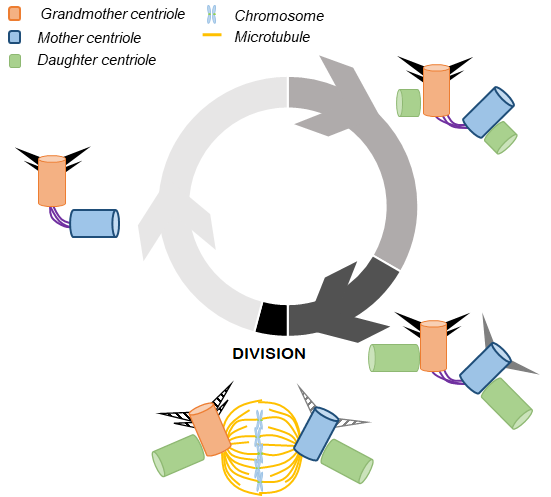Different generations of centrioles cohabit
The development, growth and survival of living organisms are based on cell division. During cell division, the chromosomes are duplicated and equally distributed between two new cells. Their segregation relies on centrosomes which must also be duplicated to organize the network of microtubules that pull apart chromosomes (see scheme). Centrosomes consist each of a pair of cylindric structures called centrioles. One key question is to understand how the duplication and the segregation of the centrioles is regulated during cell division.
Three generations of centrioles cohabit in dividing cells
When a cell enters the division process, each of its two centrioles gives rise to a new centriole. The cell thus contains three generations of centrioles: a grandmother centriole associated with its daughter centriole and a mother centriole associated with its daughter centriole.

During cell division, three generations of centrioles cohabit: a grandmother centriole (in red) associated with its daughter centriole and a mother centriole (in blue) associated with its daughter centriole.
Age regulation of centrioles
To become a grandmother, a centriole needs to mature through many molecular steps. Researchers from the laboratory of Prof. Patrick Meraldi have found that the protein kinase PLK1 is a central regulator of several of these steps, but that surprisingly these different molecular events can occur independently of each other. These new findings shed light on the mechanisms of centriole maturation, a process that, when impaired during human development, can lead to kidney dysfunction, mental impairment or growth retardation.
14 Apr 2022
